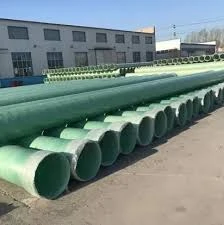
-
 Afrikaans
Afrikaans -
 Albanian
Albanian -
 Amharic
Amharic -
 Arabic
Arabic -
 Armenian
Armenian -
 Azerbaijani
Azerbaijani -
 Basque
Basque -
 Belarusian
Belarusian -
 Bengali
Bengali -
 Bosnian
Bosnian -
 Bulgarian
Bulgarian -
 Catalan
Catalan -
 Cebuano
Cebuano -
 China
China -
 China (Taiwan)
China (Taiwan) -
 Corsican
Corsican -
 Croatian
Croatian -
 Czech
Czech -
 Danish
Danish -
 Dutch
Dutch -
 English
English -
 Esperanto
Esperanto -
 Estonian
Estonian -
 Finnish
Finnish -
 French
French -
 Frisian
Frisian -
 Galician
Galician -
 Georgian
Georgian -
 German
German -
 Greek
Greek -
 Gujarati
Gujarati -
 Haitian Creole
Haitian Creole -
 hausa
hausa -
 hawaiian
hawaiian -
 Hebrew
Hebrew -
 Hindi
Hindi -
 Miao
Miao -
 Hungarian
Hungarian -
 Icelandic
Icelandic -
 igbo
igbo -
 Indonesian
Indonesian -
 irish
irish -
 Italian
Italian -
 Japanese
Japanese -
 Javanese
Javanese -
 Kannada
Kannada -
 kazakh
kazakh -
 Khmer
Khmer -
 Rwandese
Rwandese -
 Korean
Korean -
 Kurdish
Kurdish -
 Kyrgyz
Kyrgyz -
 Lao
Lao -
 Latin
Latin -
 Latvian
Latvian -
 Lithuanian
Lithuanian -
 Luxembourgish
Luxembourgish -
 Macedonian
Macedonian -
 Malgashi
Malgashi -
 Malay
Malay -
 Malayalam
Malayalam -
 Maltese
Maltese -
 Maori
Maori -
 Marathi
Marathi -
 Mongolian
Mongolian -
 Myanmar
Myanmar -
 Nepali
Nepali -
 Norwegian
Norwegian -
 Norwegian
Norwegian -
 Occitan
Occitan -
 Pashto
Pashto -
 Persian
Persian -
 Polish
Polish -
 Portuguese
Portuguese -
 Punjabi
Punjabi -
 Romanian
Romanian -
 Russian
Russian -
 Samoan
Samoan -
 Scottish Gaelic
Scottish Gaelic -
 Serbian
Serbian -
 Sesotho
Sesotho -
 Shona
Shona -
 Sindhi
Sindhi -
 Sinhala
Sinhala -
 Slovak
Slovak -
 Slovenian
Slovenian -
 Somali
Somali -
 Spanish
Spanish -
 Sundanese
Sundanese -
 Swahili
Swahili -
 Swedish
Swedish -
 Tagalog
Tagalog -
 Tajik
Tajik -
 Tamil
Tamil -
 Tatar
Tatar -
 Telugu
Telugu -
 Thai
Thai -
 Turkish
Turkish -
 Turkmen
Turkmen -
 Ukrainian
Ukrainian -
 Urdu
Urdu -
 Uighur
Uighur -
 Uzbek
Uzbek -
 Vietnamese
Vietnamese -
 Welsh
Welsh -
 Bantu
Bantu -
 Yiddish
Yiddish -
 Yoruba
Yoruba -
 Zulu
Zulu
frp cover
Understanding FRP Cover Properties, Applications, and Benefits
Fiber Reinforced Polymer (FRP) composites have emerged as a revolutionary material in various industries due to their unique properties and advantages over traditional materials. FRP covers, in particular, have gained popularity across sectors such as construction, automotive, aerospace, and civil engineering. This article delves into the characteristics, applications, and benefits of FRP covers, highlighting their significance in modern engineering and design.
FRP is composed of a polymer matrix reinforced with fibers, typically glass, carbon, or aramid. This combination yields materials that are lightweight yet incredibly strong, offering an optimal solution for a variety of applications. One of the most notable properties of FRP covers is their resistance to corrosion. Unlike metals that may rust or degrade over time, FRP materials maintain their integrity when exposed to harsh environments, making them ideal for use in coastal areas, chemical plants, and wastewater treatment facilities.
.
In terms of fire resistance, FRP materials have improved significantly over the years. Many FRP products are designed to meet specific fire safety regulations, making them suitable for various applications where fire safety is a concern. Moreover, their thermal insulation properties prevent heat transfer, contributing to energy efficiency in buildings and infrastructure.
frp cover

Applications of FRP covers span a wide range of sectors. In the construction industry, FRP covers are commonly used for bridge decks, pedestrian walkways, and building facades. Their non-conductive properties make them safe for electrical applications, further expanding their use in utility and communication infrastructures. In the automotive sector, FRP covers help to reduce vehicle weight, improving fuel efficiency and enhancing performance while maintaining safety standards.
The benefits of using FRP covers extend beyond their physical properties. They are often easier to install than traditional materials, allowing for quicker project turnaround times and reduced labor costs. Additionally, the longevity of FRP covers minimizes maintenance needs, resulting in cost savings over the life span of the material. This durability means that once an FRP cover is installed, property owners can expect minimal intervention or replacement for several decades.
Environmental considerations also play a significant role in the growing adoption of FRP covers. Many manufacturers are now producing eco-friendly formulations of FRP, incorporating recycled materials in their production processes and creating products that can be recycled at the end of their life cycle. This contributes to sustainability efforts, especially in industries striving to reduce their carbon footprint.
Despite the numerous advantages, it is essential to acknowledge that FRP covers are not without challenges. Their initial cost can be higher than traditional materials, though the long-term savings in maintenance and durability often justify the investment. Additionally, as with any material, careful attention must be paid to the environmental and manufacturing processes to ensure safety and compliance with regulations.
In conclusion, FRP covers are a remarkable advancement in material science, offering numerous benefits across various industries. With their exceptional strength, lightweight nature, and resistance to corrosion and fire, they continue to transform the way products are designed and implemented. As technology advances and manufacturing practices evolve, the potential applications and benefits of FRP covers will only expand, making them a critical component for future projects in engineering and construction.
Latest news
-
Exploring the Benefits of Top Hammer Drifter Rods for Enhanced Drilling PerformanceNewsJun.10,2025
-
High-Precision Fiberglass Winding Machine for GRP/FRP Pipe Production – Reliable & Efficient SolutionsNewsJun.10,2025
-
FRP Pipes & Fittings for Shipbuilding - Corrosion-Resistant & LightweightNewsJun.09,2025
-
Premium FRP Flooring Solutions Durable & Slip-ResistantNewsJun.09,2025
-
Premium Fiberglass Rectangular Tanks Durable & Lightweight SolutionNewsJun.09,2025
-
Tapered Drill String Design Guide Durable Performance & UsesNewsJun.09,2025









